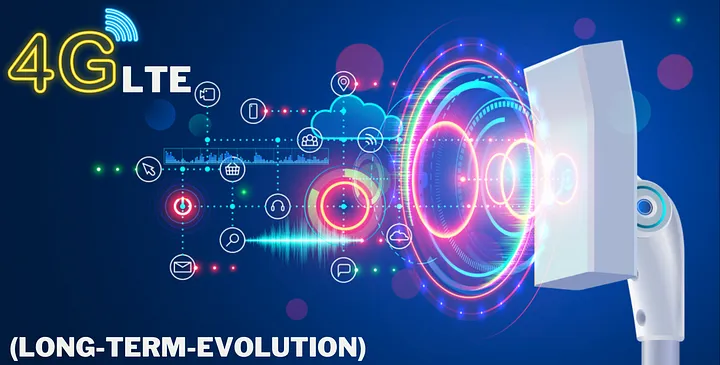Welcome to our series of articles on Interoperability in Government Agencies. In this collection, we aim to provide a comprehensive understanding of the concept, mechanisms, and importance of interoperability, with a specific focus on its role in local LTE (Long-Term Evolution) networks. As the series progresses, we will delve into more specialized and technical aspects, equipping you with the knowledge necessary to navigate this complex subject.
- What is interoperability in the context of Government Agencies?
Interoperability refers to the ability of different systems, organizations, or entities to exchange and utilize information effectively. In the realm of Government Agencies, interoperability entails the seamless integration and communication of various systems and agencies, facilitating the efficient sharing of data and resources for streamlined operations.
- How does interoperability apply to local LTE?
Local LTE plays a vital role in achieving interoperability within Government Agencies. LTE, a high-speed wireless communication technology, enables agencies to establish private networks for secure and reliable communication. Interoperability ensures that these networks can seamlessly connect and interact with other systems, both within and outside the agency, facilitating collaboration, information exchange, and coordinated efforts.
- What are the roles of local LTE in achieving interoperability in Government Agencies?
Local LTE networks serve as a foundation for interoperability in Government Agencies by providing a robust communication infrastructure. They enable agencies to establish dedicated networks with enhanced coverage, capacity, and security, allowing for efficient data transmission, real-time collaboration, and coordinated responses across multiple agencies.
- What are some use cases for interoperability in Government Agencies?
Interoperability in Government Agencies has numerous use cases, such as emergency response coordination, public safety communications, disaster management, law enforcement operations, healthcare systems integration, and transportation management. By enabling seamless communication and information sharing, interoperability enhances the effectiveness and efficiency of these critical operations.
- What is the mechanism behind interoperability, and why is it essential?
The mechanism of interoperability involves the establishment of common standards, protocols, and data formats to ensure compatibility and seamless integration between diverse systems. It requires the adoption of open standards, data sharing agreements, and collaborative frameworks. Interoperability is essential as it eliminates silos, enhances data-driven decision-making, optimizes resource allocation, and fosters interagency collaboration, leading to improved overall performance and public service delivery.
- How can local LTE help achieve interoperability in Government Agencies?
Local LTE networks provide several benefits that contribute to achieving interoperability. They offer reliable and dedicated communication channels, ensuring secure and efficient data transmission between agencies. These networks can support a wide range of devices and applications, enabling seamless integration and compatibility among different systems. By leveraging local LTE, Government Agencies can establish a unified communication infrastructure that fosters collaboration, enhances information sharing, and promotes interoperability.
- How does local LTE support mission-critical operations in Government Agencies?
Local LTE networks are specifically designed to meet the stringent requirements of mission-critical operations in Government Agencies. They provide high-speed data transmission, low latency, and enhanced coverage, ensuring reliable communication in demanding situations. These networks can support real-time video streaming, remote monitoring, and other data-intensive applications, enabling agencies to make informed decisions and respond swiftly during critical events.
- Can local LTE facilitate cross-agency collaboration and information sharing?
Absolutely. Local LTE networks enable seamless collaboration and information sharing across different Government Agencies. By establishing interoperable networks, agencies can exchange real-time data, share situational awareness, and coordinate responses effectively. For instance, during a multi-agency emergency response, local LTE can facilitate communication and resource coordination between law enforcement, fire departments, medical services, and other relevant agencies, leading to a more coordinated and efficient response.
- How does local LTE enhance overall operational efficiency in Government Agencies?
Local LTE integration enhances operational efficiency by streamlining communication processes and reducing response times. Agencies can leverage features like prioritized access, quality of service (QoS) management, and resource optimization to ensure critical information reaches the right personnel promptly. By eliminating communication bottlenecks and enabling efficient resource allocation, local LTE helps Government Agencies achieve their objectives with greater speed and effectiveness.
In conclusion, our exploration of interoperability in Government Agencies and its relationship with local LTE has shed light on the importance of seamless integration, collaboration, and efficient information sharing among diverse systems and agencies. We have examined the roles of local LTE in establishing a robust communication infrastructure, supporting mission-critical operations, facilitating cross-agency collaboration, and enhancing overall operational efficiency. As you embark on your journey to construct a private LTE network, it is crucial to possess a baseline understanding of these interconnected fields. Our forthcoming articles will delve deeper into the technical intricacies, equipping you with the knowledge necessary to navigate the complexities and harness the full potential of interoperability in Government Agencies. Stay tuned for valuable insights and practical implementation strategies that will empower you to achieve effective local LTE integration and unlock a new era of efficient and collaborative government operations.




